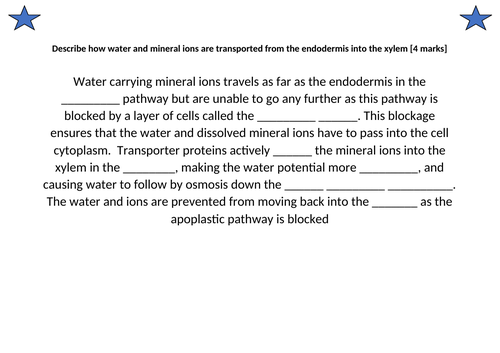


This detailed lesson describes the pathways and explains the mechanisms by which water and mineral ions are transported from the soil to the xylem. Both the engaging PowerPoint and accompanying resource have been designed to cover the first part of point 7.2 [c] in the CIE International A-level Biology specification.
The lesson begins by looking at the specialised features of the root hair cell so that students can understand how these epidermal cells absorb water and mineral ions from the soil. Moving forwards, students are introduced to key terminology such as epidermis and root cortex before time is taken to look at the different pathways that water and minerals use to transverse across the cortex. Discussion points are included throughout the lesson to encourage the students to think about each topic in depth and challenges them to think about important questions such as why the apoplastic pathway is needed for the water carrying the ions. The main part of the lesson focuses on the role of the endodermis in the transport of the water and ions into the xylem. Students will be introduced to the Casparian strip and will learn how this layer of cells blocks the apoplastic pathway. A step by step method using class questions and considered answers is used to guide them through the different steps and to support them when writing the detailed description.
This lesson has been written to tie in with the next lesson on the pathways and mechanisms by which water and mineral ions are transported to the leaves.
Something went wrong, please try again later.
This resource hasn't been reviewed yet
To ensure quality for our reviews, only customers who have downloaded this resource can review it
Report this resourceto let us know if it violates our terms and conditions.
Our customer service team will review your report and will be in touch.